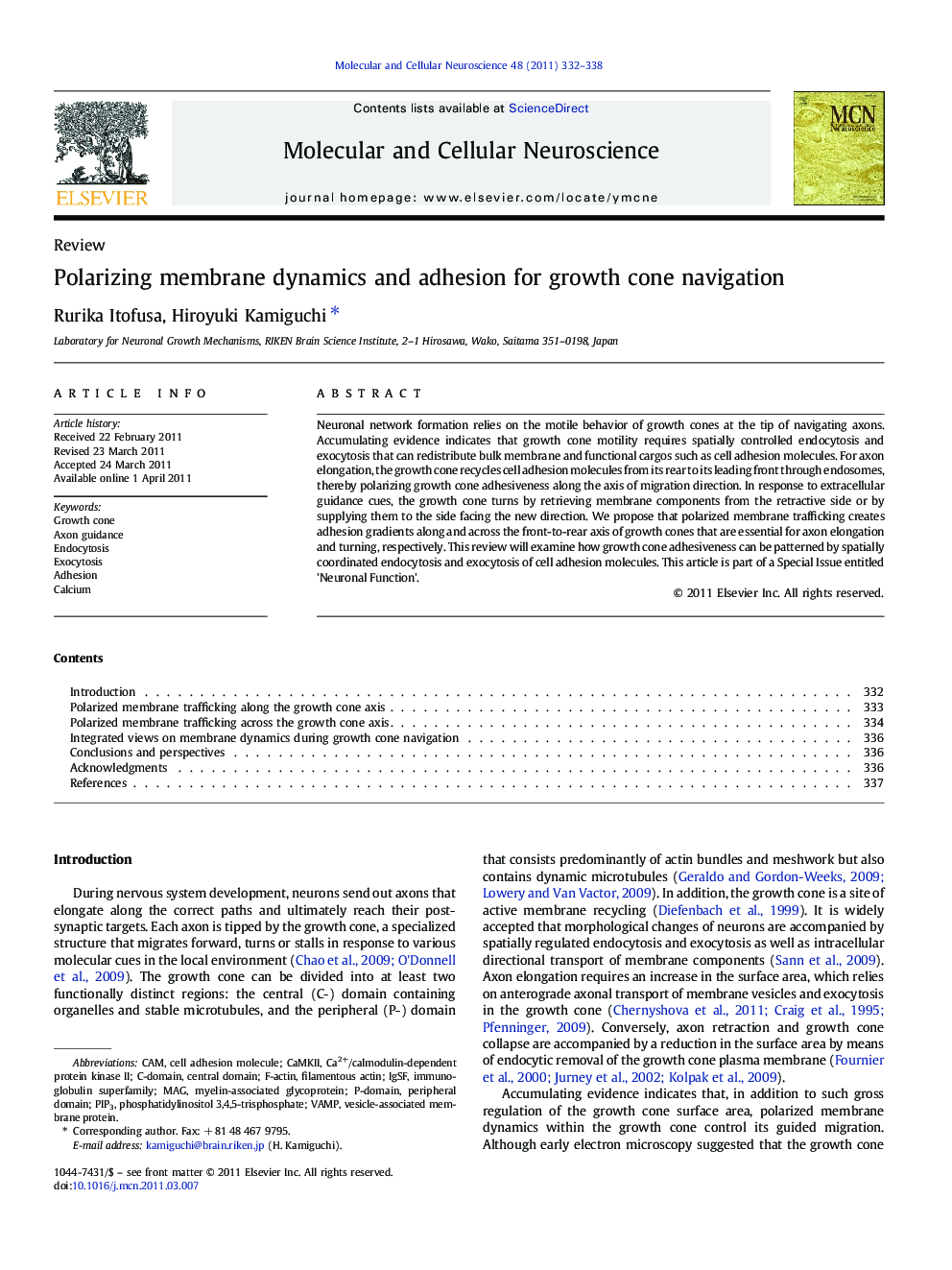| Article ID | Journal | Published Year | Pages | File Type |
|---|---|---|---|---|
| 2198689 | Molecular and Cellular Neuroscience | 2011 | 7 Pages |
Neuronal network formation relies on the motile behavior of growth cones at the tip of navigating axons. Accumulating evidence indicates that growth cone motility requires spatially controlled endocytosis and exocytosis that can redistribute bulk membrane and functional cargos such as cell adhesion molecules. For axon elongation, the growth cone recycles cell adhesion molecules from its rear to its leading front through endosomes, thereby polarizing growth cone adhesiveness along the axis of migration direction. In response to extracellular guidance cues, the growth cone turns by retrieving membrane components from the retractive side or by supplying them to the side facing the new direction. We propose that polarized membrane trafficking creates adhesion gradients along and across the front-to-rear axis of growth cones that are essential for axon elongation and turning, respectively. This review will examine how growth cone adhesiveness can be patterned by spatially coordinated endocytosis and exocytosis of cell adhesion molecules. This article is part of a Special Issue entitled 'Neuronal Function'.
